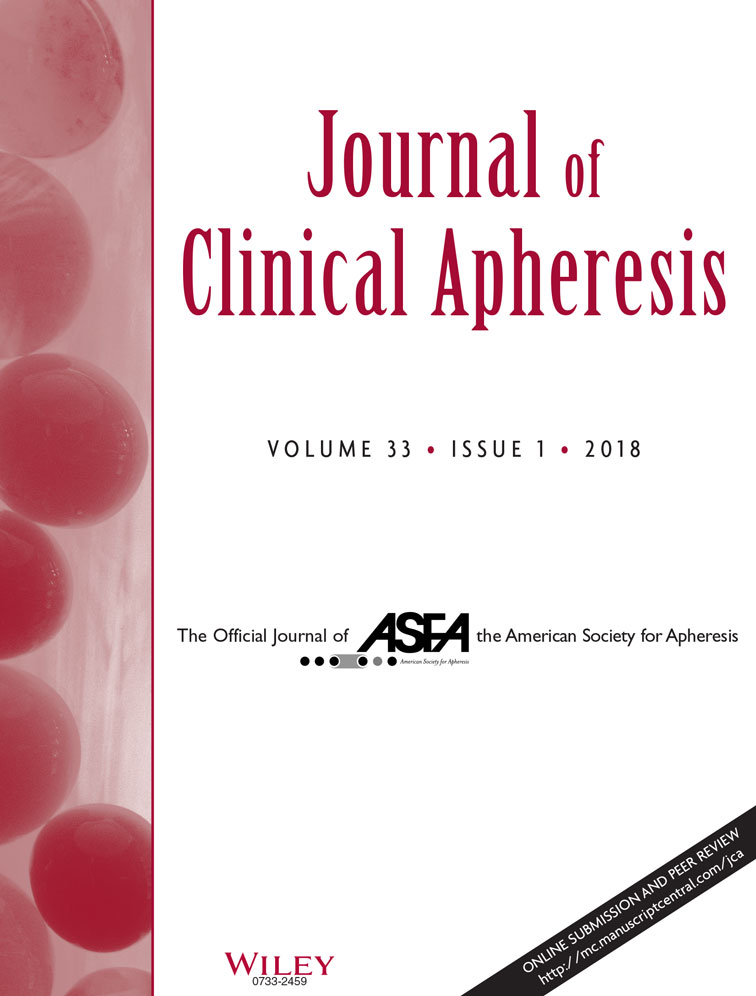Impact of lipoprotein apheresis with dextran-sulfate adsorption on the expression of genes involved in cardiovascular health in the blood of patients with homozygous familial hypercholesterolemia
Funding information: Kaneka Pharma LLC (Osaka, Japan).
Abstract
Lipoprotein apheresis (LA) with dextran sulfate adsorption (DSA) is a reliable method to decrease LDL-cholesterol (C) concentrations in patients with homozygous familial hypercholesterolemia (HoFH). The objective of the present study was to investigate the impact of LA with DSA on the mRNA expression of genes associated with cardiovascular health in the whole blood of HoFH patients. Blood samples were collected before and after LA treatment with DSA in 9 HoFH patients. Microarray analyses were performed to measure the whole blood expression of >30 000 annotated genes pre- and post-LA. Concomitant reductions in LDL-C (median −73.8%, range: −55.9 to −82.0, P = .0001) and lipoprotein (a) concentrations (median −74.1%, range −65.6 to −84.1, P = .003) were induced with LA treatment. LA with DSA did not impact the whole blood mRNA expression of most key genes involved in cardiovascular health, including those associated with cholesterol, fatty acid and lipoprotein metabolism. However, LA with DSA significantly upregulated the whole blood expression of early growth response protein (EGR)1 (1.94-fold, P = .02), EGR3 (1.56-fold, P = .0008) and B-cell lymphoma 3-encoded protein (BCL3; 1.25-fold, P = .03). In conclusion, this study demonstrated that a single LA treatment with DSA has very limited impact on the whole blood expression of a broad spectrum of genes associated with cardiovascular health. Our results suggest that contact between blood cells and the primary membrane or extracorporeal circulation could upregulate the expression of EGR1, EGR3, BCL3, and MMP9 in blood cells.




